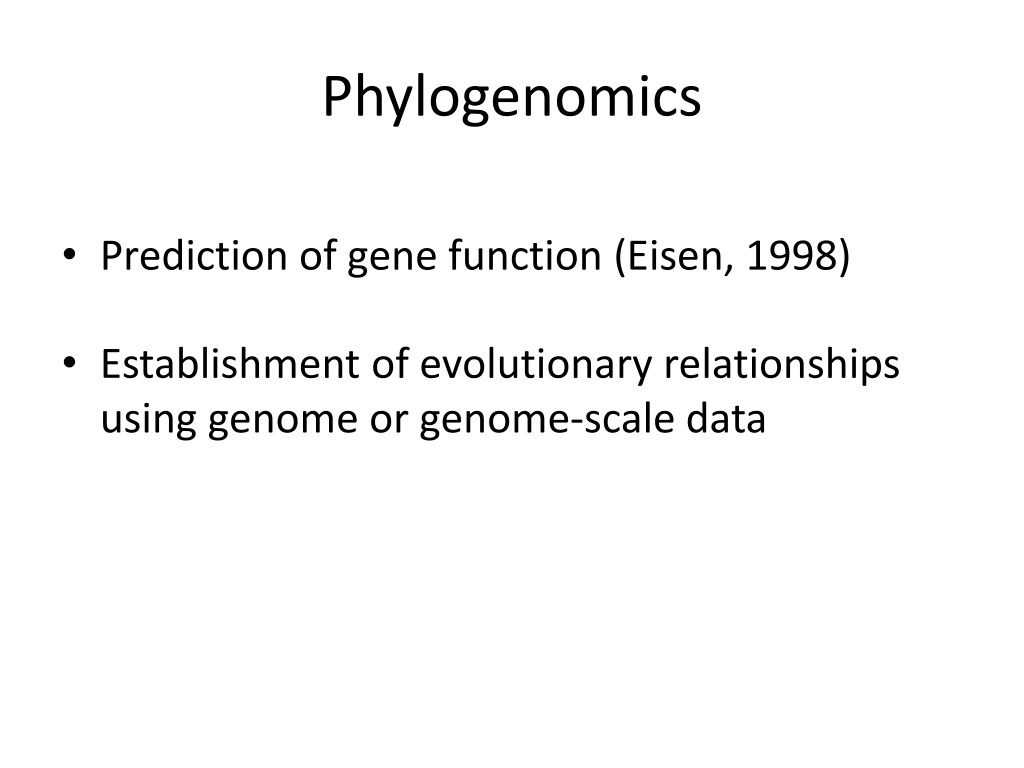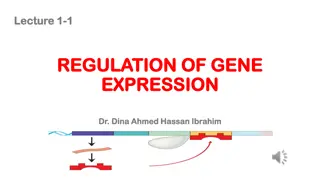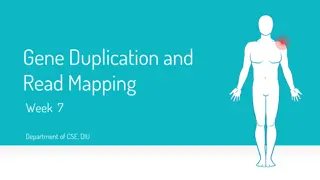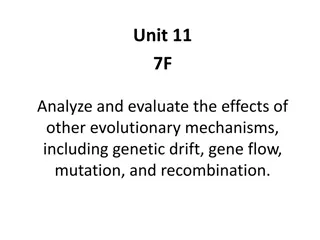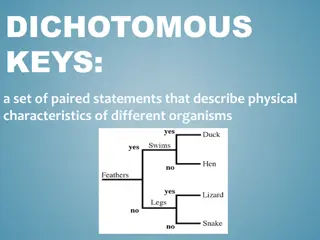Understanding Phylogenomics and Gene Function Prediction in Evolutionary Biology
Explore the significance of phylogenomics in predicting gene functions and establishing evolutionary relationships using genome-scale data. Learn about the challenges of using single genes or a few genes in phylogenetic analysis, the importance of analyzing multilocus data, and the need for multiple genes to resolve different nodes in evolutionary trees. Discover the concept of partitioned analysis and the impact of assumptions like i.i.d. on phylogenetic inference.
- Phylogenomics
- Gene Function Prediction
- Evolutionary Relationships
- Multilocus Analysis
- Partitioned Analysis
Download Presentation

Please find below an Image/Link to download the presentation.
The content on the website is provided AS IS for your information and personal use only. It may not be sold, licensed, or shared on other websites without obtaining consent from the author. Download presentation by click this link. If you encounter any issues during the download, it is possible that the publisher has removed the file from their server.
E N D
Presentation Transcript
Phylogenomics Prediction of gene function (Eisen, 1998) Establishment of evolutionary relationships using genome or genome-scale data
One gene or more genes? Single gene or a few genes often result low resolution. Single gene or a few genes may even reach to the wrong phylogeny.
Systematic error + + + Phylogenetic signal Gene A Gene B Gene C
How many gene needed? The figure shows resolving different node may need different number of genes. Few nodes can be resolved by single gene or a few genes. Most node need 5 to 10 thousand amino-acid (15-30 genes) to be resolved. Few nodes can not be resolved even with many genes. 2,5000 nucleotides are needed for resoultion of avian tree (Edwards et at., 2005). From Delsuc et al. 2005
How to analyze multilocus data? Remember i.i.d.?
Partitioned analysis guided by cluster analysis and phylogeny of ray-finned fish
Assumption of i.i.d.??? Topology and branch length Taxa 1 Taxa 2 Taxa 3 Taxa 4 Taxa 5 Substitution matrix rTC (= rCT), rTA (= rAT), rTG (= rGT) rCA (= rAC), rCG (= rGC) rAG (= rGA) Stationary base frequencies fT, fC, fA, fG,
Partitioning by genes and codons Concatenated sequence By genes G1 G2 G3 G4 G5 G6 G7 G8 G9 G10 By codon positions 1st 2nd 3rd
By both genes and codon positions G1 G2 G3 G4 G5 G6 G7 G8 G9 G10 1st 2nd 3rd1st 2nd 3rd1st 2nd 3rd1st 2nd 3rd1st 2nd 3rd1st 2nd 3rd1st 2nd 3rd1st 2nd 3rd1st 2nd 3rd1st 2nd 3rd Is partitioned by both genes and codon positions over-parameterized?
Data Ten nuclear genes: zic1, myh6, RYR3, Ptc, tbr1, ENC1, Glyt, SH3PX3, plagl2 and sreb2. 56 taxa representing 41 of the 44 orders of ray-finned fish and 4 outgroups 8025 nucleotides
Clustering of blocks based on genes and codons 5 parts 2 parts
i(AICi - AICbest) and Bayes likelihood for partitioning based on grouping blocks Bayes likelihood i
Conclusion Partitioning by both genes and codon positions is over-parameterized. Cluster analysis helps in reducing the number of partitions. Li et al., 2008, Syst. Biol. 57(4): 519-539
Gene tree vs. species tree A paradigm shift (Scott Edward)
Gene duplication and loss Li et al., 2007 BMC Evolutionary Biology
Horizontal Gene Transfer Cordero et al., 2009 PNAS
Hierarchical nature of phylogeny Liu, Yu, Kubatko, Pearl and Edwards 2009. Mol. Phyl. Evol. 53:320-328
BEAST is a cross-platform program for Bayesian MCMC analysis of molecular sequences. Can be used to reconstruct species tree. http://beast.bio.ed.ac.uk/Main_Page
ASTRAL: genome-scale coalescent-based species tree estimation ASTRAL is a java program for estimating a species tree given a set of unrooted gene trees. ASTRAL is statistically consistent under multi-species coalescent model (and thus is useful for handling ILS). The optimization problem solved by ASTRAL seeks to find the tree that maximizes the number of induced quartet trees in gene trees that are shared by the species tree. The current repository (master branch) includes the ASTRAL- III algorithm.
